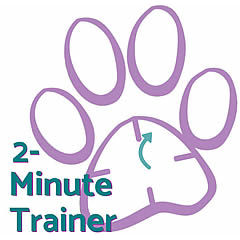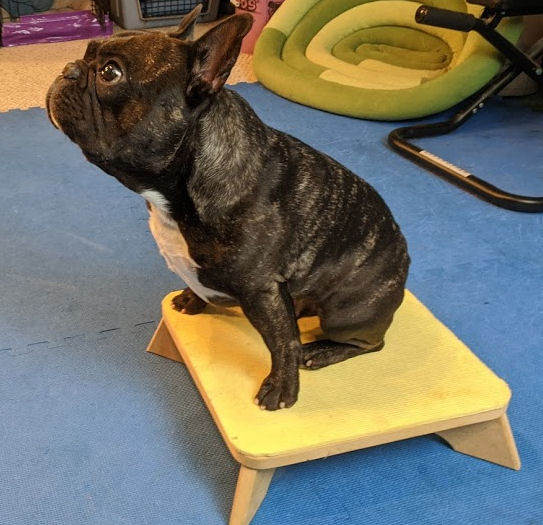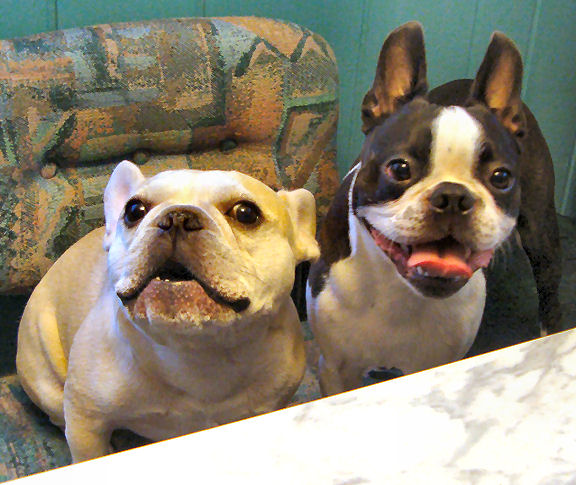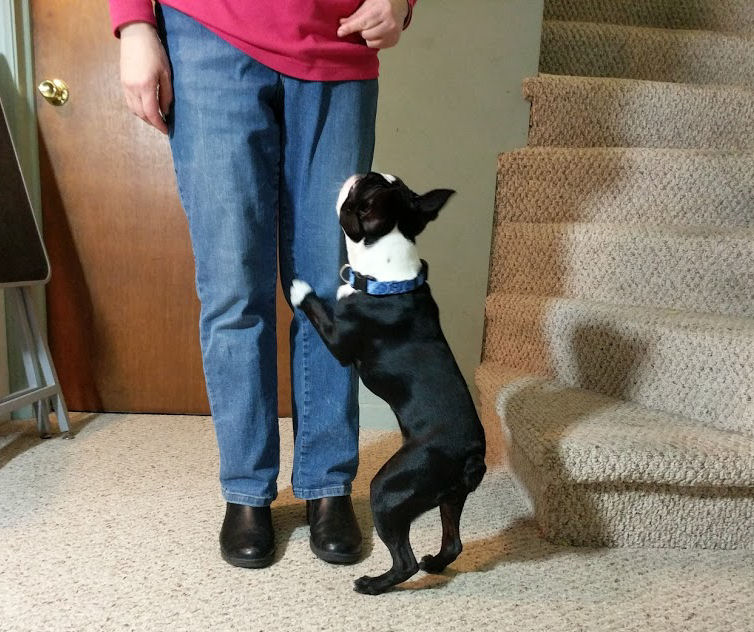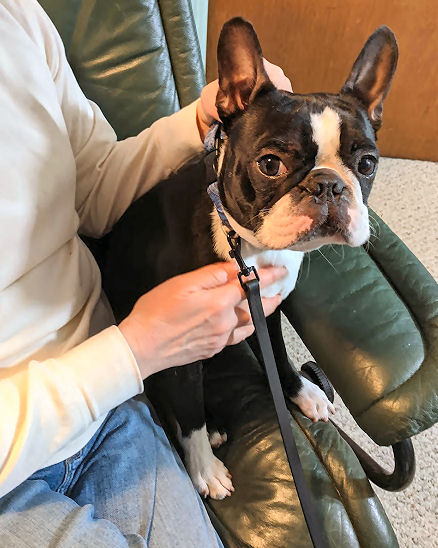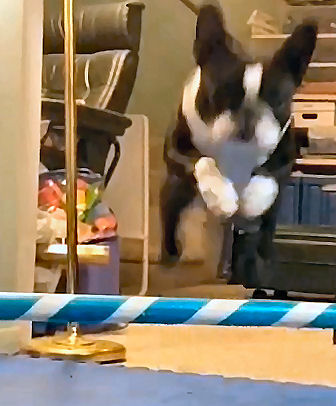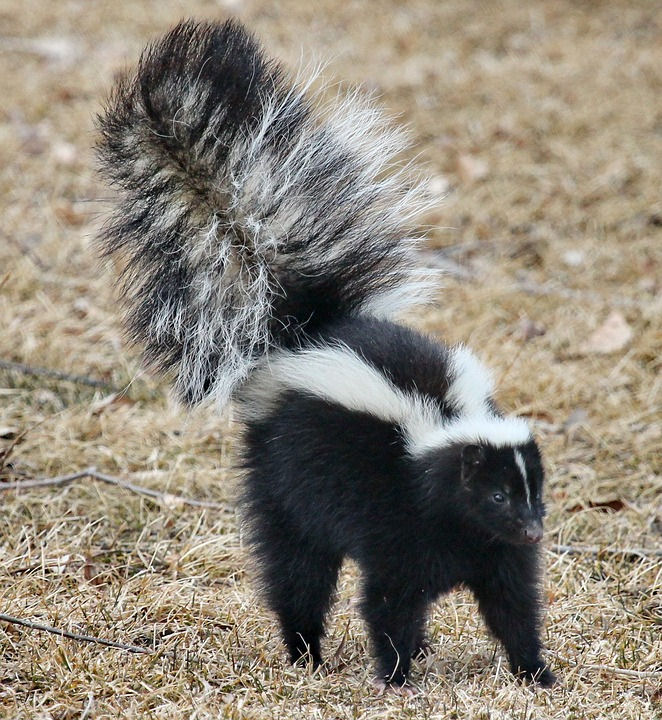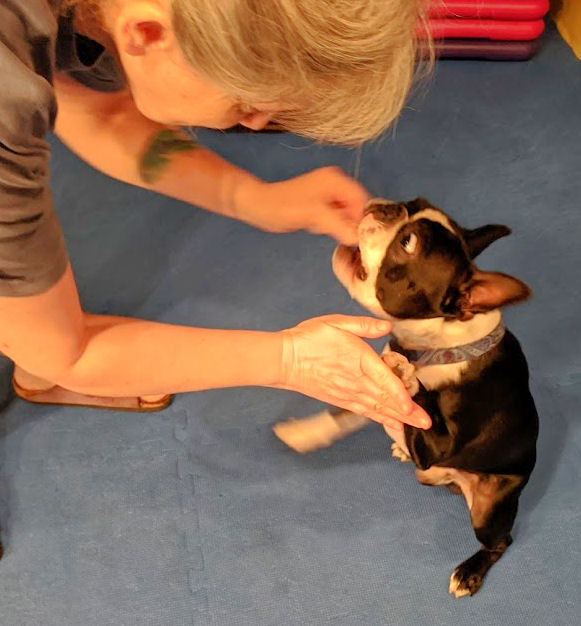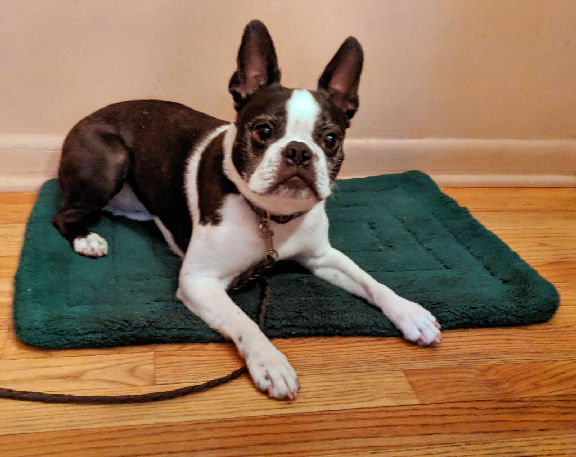Wouldn’t it be wonderful if your dog would sit to say hello?
If you don’t think it’s possible, you’re probably not going to believe you can get there just by playing a little two-minute game with your dog. You may have to play it a couple of times a day for about a week. But it works and you can do it!
Easier to start fresh
Normal certainly looks different today than it did a couple of years ago. When life was “normal,” most dogs were exposed to at least a few different people on a regular basis. Friends and family would stop by, and dogs learned to take their presence in stride.
Since we’ve had pandemic restrictions on travel and visiting, many people’s and dogs’ lives are less social. If this applies to your situation, this is a great game to play with your dog. Be prepared for times when your circle expands.
Luckily, you can play the game without anybody else around. All you need is you and your dog. And treats. Lots of yummy treats. Mainly for the dog, but you probably deserve some, too!
Get your dog excited
The first step is to get your dog all excited. It may seem counter-intuitive. To teach your dog how to be controlled and calm, you would think you start there – controlled and calm. Logical, except for one thing. It doesn’t work. Starting calm doesn’t teach calm. (Now, this is different than teaching your dog to be calm when it’s just her and the family. That’s usually a more subdued starting point.”
When the doorbell rings, or someone comes in, chances are your dog will be excited. One of the charming things about dogs is how happy they are to see us – even if all we did was take out the trash. Your normal dog is going to be wildly happy to see whoever walks in the door. The objective is to get your dog to wiggle delightedly from a sitting position.
In our house, it doesn’t take much for chaos and mayhem to break out. For unknown reasons, knocking on the counter sets Booker off, barking and jumping around, ready for zoomies. If your dog has a similar trigger, use it. Celebrate it! Say silly things like “Yes, get crazy!” “That’s my nutsy puppy!” “Dog, you are one happy puppy!”
Okay, it’s loud. Now what?
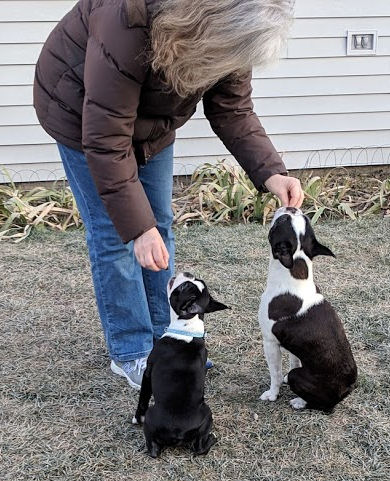
Once your dog is happy, excited, and you’re starting to think the neighbors will complain, reward your dog. Then be still. Don’t say anything. Don’t move. It’s like you’re playing “Red Light, Green Light” and the light turned red. Become a statue.
If your dog is like most, she won’t know what the heck happened. She will stop, look around, try to see what’s changed. And then, if she’s like most dogs, she’ll sit in front of you, puzzled. Reward! Good puppy! Nice “hello!”
Then do it again. If she didn’t sit, you can whisper the word, without moving. If she does, reward and start again!
Teaching “Hello!”
Achieving impulse control is one of the most difficult things for dogs to learn. By playing this reversed, doggy version of “Green Light, Red Light” you’re pairing the excitement of movement with its opposite. Using the word “Hello!” will associate it to the stillness of the sit.
A good portion of dog training is vocabulary building for our dogs. Once they understand what a word means, most dogs are happy to do it. If we teach them that “Hello!” means sit still, we automatically pair greetings with good behavior.
